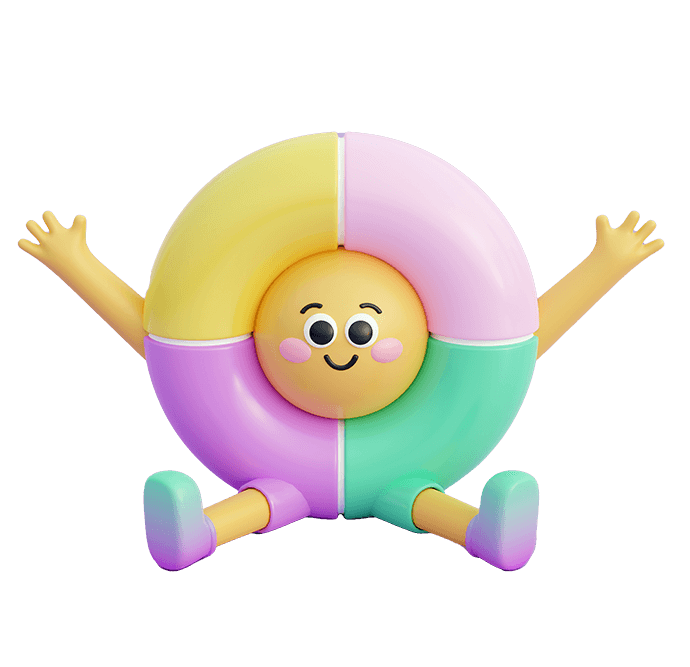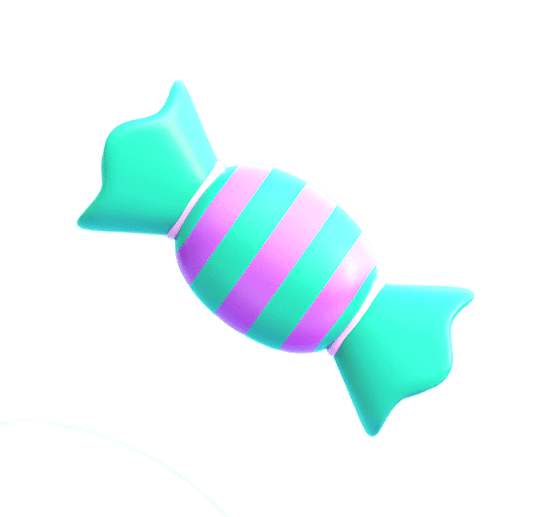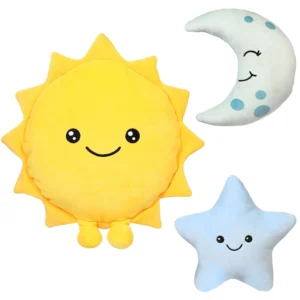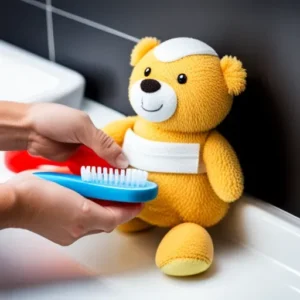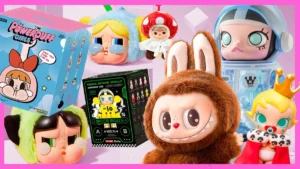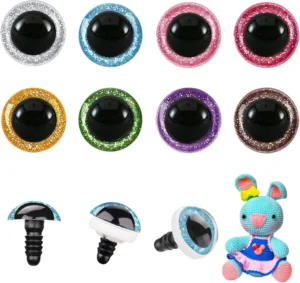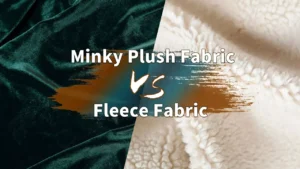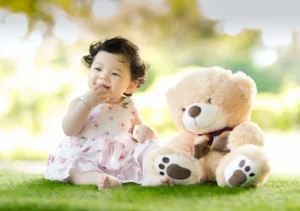Plush toys have been beloved companions for children and adults alike for decades. They bring comfort, joy, and even serve as collectors’ items. But have you ever wondered what makes them so cuddly? The answer lies in the stuffing, which plays a vital role in defining the softness, durability, and feel of the toy. In this article, we will explore the various materials used to stuff plush toys, the environmental impacts, and how manufacturers make these decisions. If you’re considering creating your own plush toy, knowing what’s inside is just as important as what’s on the outside.
Plush toys are typically stuffed with materials such as polyester, cotton, and natural fibers. Polyester is the most common, offering softness and durability. Other options like cotton and wool are also used, with specific environmental and safety considerations.
1. What Is the Most Common Material Used to Stuff Plush Toys?
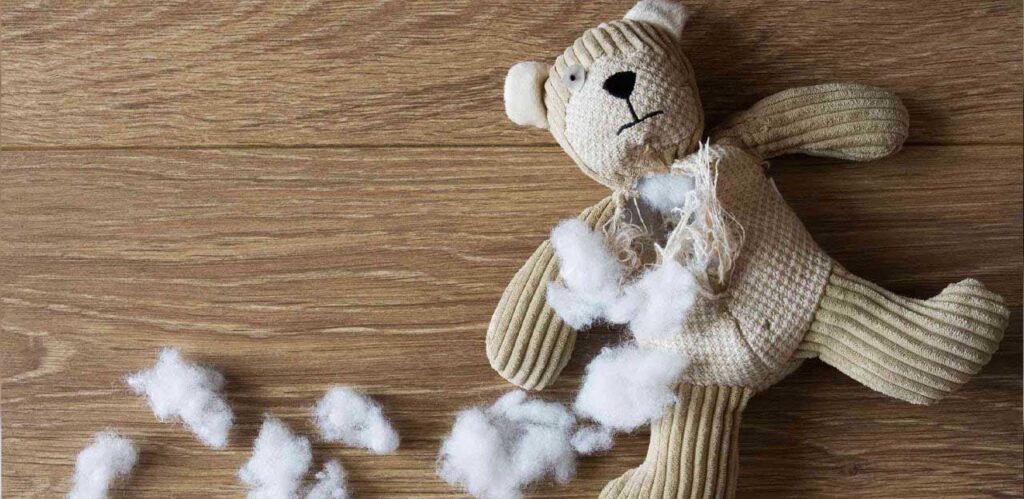
When it comes to plush toys, the most common material used for stuffing is polyester fiber. It has become a favorite in the toy industry due to its softness, resilience, and ability to retain shape over time. Polyester is inexpensive, widely available, and can be easily molded to provide that “fluffy” feel we all love. Other materials like cotton, wool, and even microbeads are used, but they are less common.
Polyester fiber is the most widely used material for stuffing plush toys. Its affordability, softness, and durability make it a popular choice, although alternative materials like cotton and wool are also used.
- Polyester Fiber: This synthetic material is known for its ability to hold shape and softness. Polyester stuffed toys can be easily machine washed, which adds to their appeal for parents looking for low-maintenance items.
- Cotton: As a natural alternative, cotton is hypoallergenic and soft to the touch, making it a popular choice for stuffed animals intended for infants or those with sensitive skin. Cotton stuffing, however, can clump and lose its form over time.
- Wool: Wool, though less common, provides a plush, luxurious feel. It’s naturally breathable and moisture-wicking, but it’s often more expensive and can require specialized cleaning.
Here’s a quick comparison of the materials used for plush toy stuffing:
| Material | Pros | Cons |
|---|---|---|
| Polyester | Soft, durable, machine-washable | Can be less breathable than cotton |
| Cotton | Hypoallergenic, soft | Clumps, can lose shape over time |
| Wool | Luxurious, breathable | Expensive, requires special care |
2. Which Stuffing Materials Are Best for Safety and Durability?
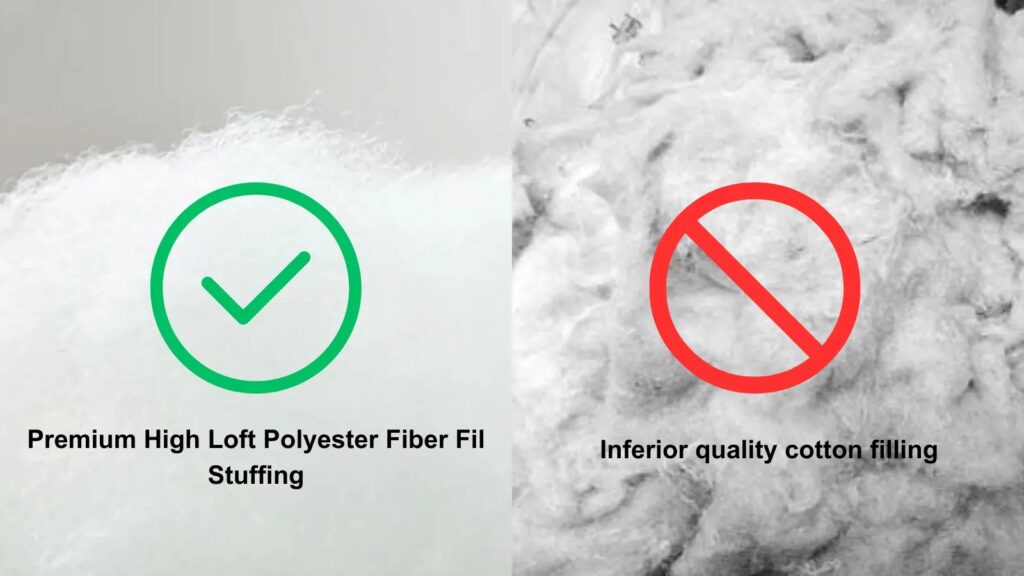
Safety is a primary concern when manufacturing plush toys. Materials like polyester fiber are often chosen because they meet various safety standards. For instance, they are non-toxic and flame-resistant, which is vital for ensuring the safety of children. Cotton and wool are also considered safe, but they need to meet rigorous safety checks, especially when used in toys for younger children.
Polyester fiber, cotton, and wool are safe materials for plush toy stuffing. However, polyester is often the most durable, flame-resistant, and non-toxic option for ensuring safety.
- Flame Resistance: Many plush toys are required to meet fire safety standards. Polyester fibers are treated to be flame-resistant, making them a safer option for children’s toys.
- Hypoallergenic Options: Cotton and wool are popular for their hypoallergenic properties. However, cotton tends to absorb moisture, which may lead to bacteria growth if not maintained properly. Polyester, on the other hand, resists moisture accumulation, making it less prone to mold and bacteria.
- Durability: Polyester has the edge when it comes to durability. It withstands wear and tear better than cotton or wool, which can lose their shape or integrity after prolonged use.
Let’s break down how each material stacks up on safety and durability:
| Material | Flame Resistant | Hypoallergenic | Durability |
|---|---|---|---|
| Polyester | Yes | No | High |
| Cotton | No | Yes | Medium |
| Wool | No | Yes | Medium-High |
3. How Is Polyester Fiber Used in Plush Toy Stuffing?
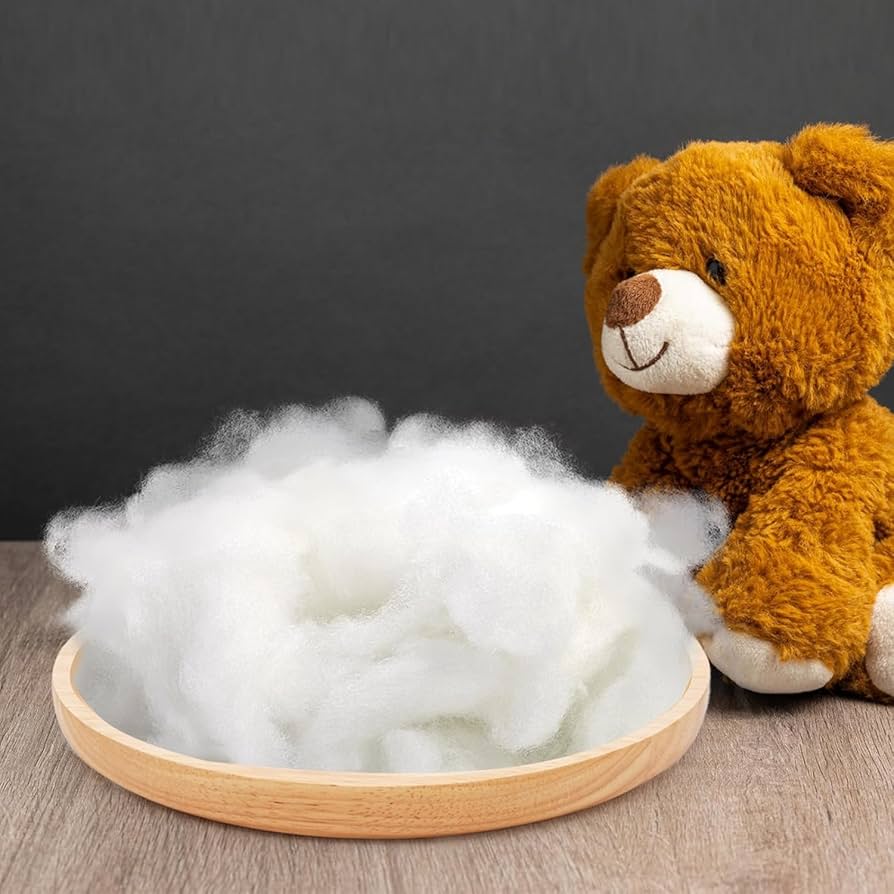
Polyester fiber is the go-to choice for most plush toy manufacturers. It is produced by bonding tiny fibers together to form soft, lightweight clumps that can be stuffed into the toy. The resulting filling is fluffy, soft, and easily customizable, which makes it perfect for creating different textures and firmness levels in plush toys.
Polyester fiber is bonded into soft clumps, making it ideal for plush toy stuffing. It provides the perfect combination of softness, shape retention, and ease of maintenance.
- Customization: Polyester stuffing can be adjusted in terms of density to create plush toys with varying levels of firmness. Manufacturers can use more or less stuffing to control how soft or firm a toy feels.
- Ease of Maintenance: Polyester is one of the easiest materials to clean. Most toys stuffed with polyester fiber can be machine washed, which is a major selling point for parents who need to keep toys clean.
- Cost Efficiency: Polyester is less expensive than many natural alternatives like cotton and wool, making it a cost-effective choice for large-scale production.
Here’s how polyester compares to other stuffing materials in terms of cost and maintenance:
| Material | Cost | Maintenance | Softness |
|---|---|---|---|
| Polyester | Low | Easy (Machine Wash) | High |
| Cotton | Medium | Moderate (Hand Wash) | Medium |
| Wool | High | High (Dry Clean) | High |
4. Are Natural Materials Better for Stuffing Plush Toys?
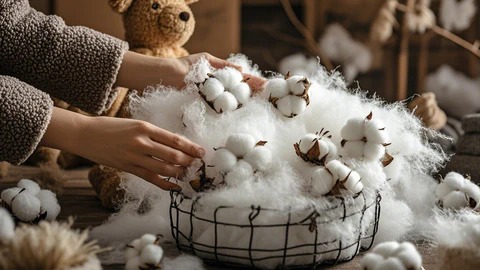
Natural materials, such as cotton, wool, and even bamboo, have gained popularity as alternatives to synthetic fibers like polyester. These materials are biodegradable, more sustainable, and often perceived as better for the environment. However, they also come with their own set of challenges, such as higher costs and specific maintenance requirements.
Natural materials like cotton and wool are sustainable alternatives for plush toy stuffing but may be more expensive and harder to maintain than polyester fiber.
- Cotton: Cotton is a natural, breathable material, making it ideal for plush toys that need to be soft and hypoallergenic. However, cotton stuffing tends to clump over time and can lose its softness.
- Wool: Wool is a natural insulator and moisture-wicking material, offering a luxurious feel. However, it can be expensive and often requires special cleaning techniques to avoid shrinkage or damage.
- Bamboo: Bamboo stuffing is gaining traction for its environmental benefits. It’s biodegradable and antibacterial, but it’s also costlier than polyester and may not retain its shape as well over time.
Let’s look at the key differences between natural and synthetic stuffing materials:
| Material | Sustainability | Cost | Maintenance |
|---|---|---|---|
| Cotton | High | Medium | Moderate (Hand Wash) |
| Wool | High | High | High (Dry Clean) |
| Bamboo | High | High | Moderate (Hand Wash) |
| Polyester | Low | Low | Easy (Machine Wash) |
5. What Are the Environmental Impacts of Plush Toy Stuffing Materials?

As more consumers become environmentally conscious, the demand for sustainable products is increasing. Plush toy manufacturers are responding by adopting eco-friendly materials, such as organic cotton, wool, and recycled polyester fibers. However, each material has its own environmental footprint, and choosing the right one requires balancing performance, cost, and sustainability.
Eco-friendly materials like organic cotton and recycled polyester are becoming more popular, but each stuffing material has its own environmental impact that needs to be considered.
- Recycled Polyester: This material is made from recycled plastic bottles, offering an environmentally friendly alternative to virgin polyester. It reduces waste and helps lower the carbon footprint of plush toys.
- Organic Cotton: Grown without harmful pesticides, organic cotton is a more sustainable option than conventional cotton. However, it requires more water to produce and can be expensive.
- Wool and Bamboo: These natural materials are biodegradable and offer environmental benefits. However, wool production can be energy-intensive, and bamboo processing may involve chemicals that reduce its sustainability credentials.
Check out the environmental impact comparison:
| Material | Environmental Impact | Sustainability | Recyclability |
|---|---|---|---|
| Recycled Polyester | Medium | Low | Yes |
| Organic Cotton | Low | High | No |
| Wool | Medium | Medium | No |
| Bamboo | Low | High | Yes |
6. How Do Manufacturers Choose the Right Stuffing for Plush Toys?
Choosing the right stuffing material involves balancing cost, safety, comfort, and durability. Manufacturers must also consider the target market and the intended use of the toy. For example, high-end, collectible plush toys may use more premium stuffing materials like wool or recycled polyester, while mass-produced toys may rely on the cost-effectiveness of polyester fiber.
Manufacturers choose stuffing materials based on factors like cost, safety, durability, and intended use. Premium toys often feature natural or sustainable materials, while budget options focus on synthetic fibers.
- Target Market: For plush toys intended for infants, manufacturers prioritize safety and hypoallergenic properties. Toys for older children or collectors may emphasize durability or unique textures.
- Production Volume: Larger production volumes often lead manufacturers to opt for synthetic fibers like polyester, which are cheaper and easier to produce at scale.
- Consumer Demand: Increasing consumer preference for eco-friendly products may push manufacturers to incorporate more natural or recycled materials in their production.
7. Is There a Difference in Stuffing for Different Types of Plush Toys?
Yes, the type of plush toy often dictates the kind of stuffing material used. Toys meant for younger children typically have softer, hypoallergenic stuffing, while more durable materials may be used for toys that are intended to last longer or be collectible.
Plush toys for different age groups or purposes use different stuffing materials. Younger children’s toys tend to have softer, safer stuffing, while durable or collectible toys use firmer, more long-lasting materials.
- Soft Toys for Infants: These toys often use cotton or polyester fibers that are soft to the touch and hypoallergenic.
- Durable Plush Toys for Older Kids: Toys for older children may use firmer stuffing to withstand rough play, while still remaining comfortable.
- Collector’s Plush Toys: High-end plush toys often use a mix of synthetic and natural materials for texture and luxury.
8. How to Maintain Plush Toys Based on Stuffing Material?
Different stuffing materials require different cleaning and maintenance techniques. Polyester-filled toys can often be machine-washed, while natural materials like cotton and wool may need special care.
Polyester plush toys are easy to clean, while cotton and wool require special maintenance. Understanding how to care for each material ensures the longevity of the toy.
- Polyester Care: Polyester toys can usually be machine-washed on a gentle cycle. They are resistant to mold and bacteria, making them low-maintenance.
- Cotton Care: Cotton stuffing can become clumpy after washing, so it’s best to hand wash or dry clean these toys.
- Wool Care: Wool requires gentle cleaning with mild detergents to prevent shrinking or losing shape.
Conclusion
Choosing the right stuffing material for plush toys is an essential decision for manufacturers, directly impacting the product’s safety, durability, and environmental footprint. Whether you’re considering mass production or creating a high-end collectible, understanding the advantages and limitations of various materials will guide your choices.
At Kinwin, we specialize in crafting plush toys with environmentally conscious materials, ensuring that each product meets the highest standards of quality and safety. If you’re interested in custom plush toys, feel free to reach out for an inquiry or discuss your specific needs with us!

